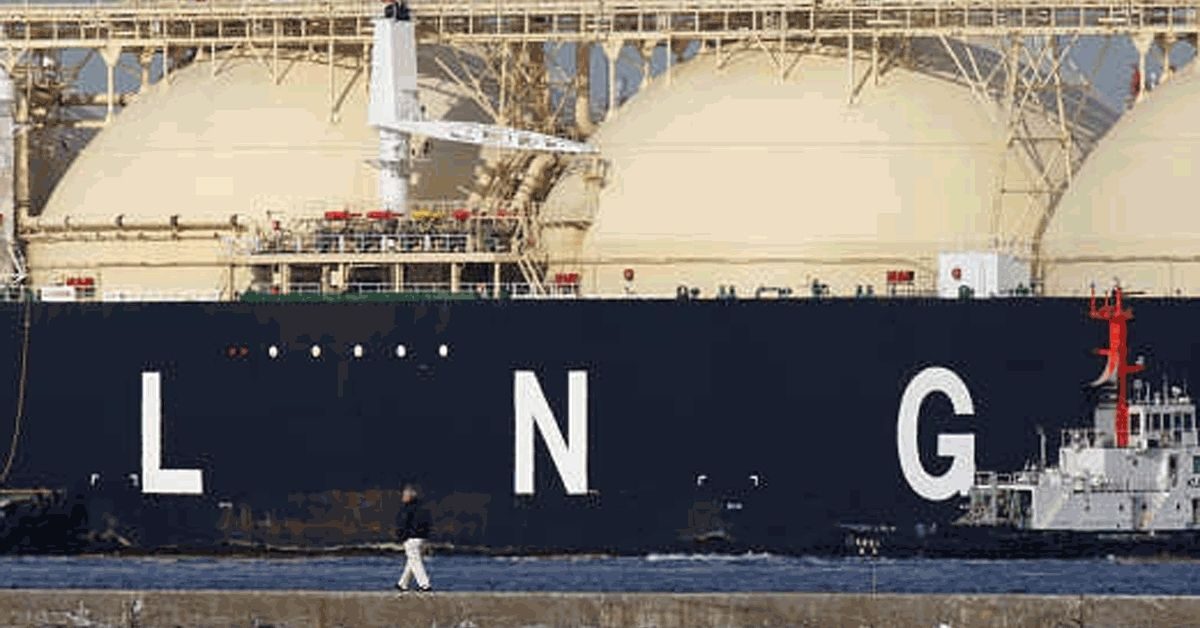Bangladesh stands among top ten Asian countries bidding for boosting LNG-storing capacity, proposing US$2.6-billion cost for building liquefied natural gas-import terminals, though escalating global spot prices make supply uncertain.
A recent Global Energy Monitor (GEM) survey shows such a paradox between storing-capacity buildup and high prices largely stoked by Europe’s desperate bid for sourcing energy amid supply disruption by the Ukraine war.
“Even as the global gas crisis upends the liquefied natural gas (LNG) trade, Asia is still positioned to build the majority of new terminals to import LNG,” says the GEM in its survey report.
According to the survey, LNG projects totaling 442 million tonnes per annum (mtpa) of new import capacity are at various stages of development in Asia, 65 per cent of new developments globally, and enough to theoretically absorb the entire global LNG trade of 2021.
In Bangladesh, 15.1mtpa new LNG-import capacity is being proposed, while 26.3mtpa was cancelled and 9.3mtpa LNG projects are in operation.
However, it says, this US$119 billion investment plan of Asian countries could lock Asian economies into reliance on a volatile, expensive energy source and challenge global efforts to address the climate crisis.
The report has mentioned that new Asian LNG projects face a difficult market. In the wake of Russia’s invasion of Ukraine, European countries have rushed to secure new gas supplies, elevating the cost of LNG worldwide. High LNG prices have already had a significant impact across Asia.
According to the International Energy Agency (IEA), LNG imports were down 7.0 per cent year on year between January and August, with spot cargoes down 28 per cent over the same period.
Price-sensitive South Asian LNG buyers, particularly Pakistan and Bangladesh, are, however, finding it difficult to pay high spot prices as the region moves into the winter.
The IEA and Rystad Energy also forecast Asia’s future gas demand and reports that in countries like Bangladesh, new LNG projects are being dropped or delayed due to poor economics.
Moreover, in developing economies, like Bangladesh and Pakistan, have been priced out, failing to secure LNG shipments and resulting in rolling blackouts.
These conditions could depress future gas demand in emerging Asian economies.
Moreover, according to Institute for Energy Economics and Financial Analysis (IEEFA), unaffordability of LNG and fuel-supply insecurity may cause new import terminals to go unused, potentially costing billions of dollars in stranded assets.
As long as unaffordable LNG prices and procurement challenges continue, US$96.7 billion worth of proposed LNG-related infrastructure projects in Pakistan, Bangladesh, Vietnam, and the Philippines will face a heightened risk of underutilization or cancellation.
Moreover, Asia’s LNG plans form part of an estimated US$797 billion global buildout of LNG terminals, which is occurring even as the international community recently reaffirmed its commitment to limiting global warming to 1.5°C at the 2022 United Nations Climate Change Conference (COP 27).
The report mentions that LNG’s adoption thus far has been motivated, in part, by its reputation as a “clean bridge fuel” from coal for Asia, despite the fact that its greenhouse-gas emissions rival those of coal and that emissions from LNG-fired power contribute to poor air quality and premature deaths.
And a report from the Intergovernmental Panel on Climate Change (IPCC) released in early 2022 states that new investments in fossil fuels, including LNG, will make it difficult, if not impossible, to avoid dangerous climate change.
The report has also highlighted that China is planning the largest LNG buildout in the region. Its 214.9mtpa LNG-import projects are estimated to cost US$72.1 billion and amount to almost half of all such capacity in development in Asia. Other leading countries developing LNG import terminals include India, Vietnam, Thailand, the Philippines, and Pakistan.
Asia has enough LNG-import projects in development to boost global LNG-import capacity by nearly 50 per cent and a third of these projects (145mtpa) are already in construction.
Moreover, future LNG supplies for Asia could come from exporters with the newest projects in development, such as the United States (322.5mtpa), Russia (133mtpa), and Canada (75.6mtpa), although globally progress advancing such projects has been mixed.
Robert Rozansky, Research Analyst at Global Energy Monitor, said: Doubling down on gas is a “recipe for disaster” with no end in sight for sky-high prices and a tight supply. Asian economies would be wise to leapfrog gas directly to sustainable, clean energy, insulated from the volatility of global fossil markets.
“Investors in planned LNG-import infrastructure run the risk of low utilization rates and ultimately possible stranded assets, as high prices are expected to continue for years to come.”
Hence, unaffordable LNG prices to climate disasters, the events of 2022 have underscored the risks of LNG consumption. Asia’s US$120 billion buildout of LNG-import terminals would represent an enormous step toward doubling down on gas over the coming decades.
As renewable energy continues to grow more affordable and secure, the survey suggests, Asian economies would benefit from meeting new demand with clean energy, insulated from the volatility of global fossil markets, and ultimately more sustainable investments in the global energy transition.








